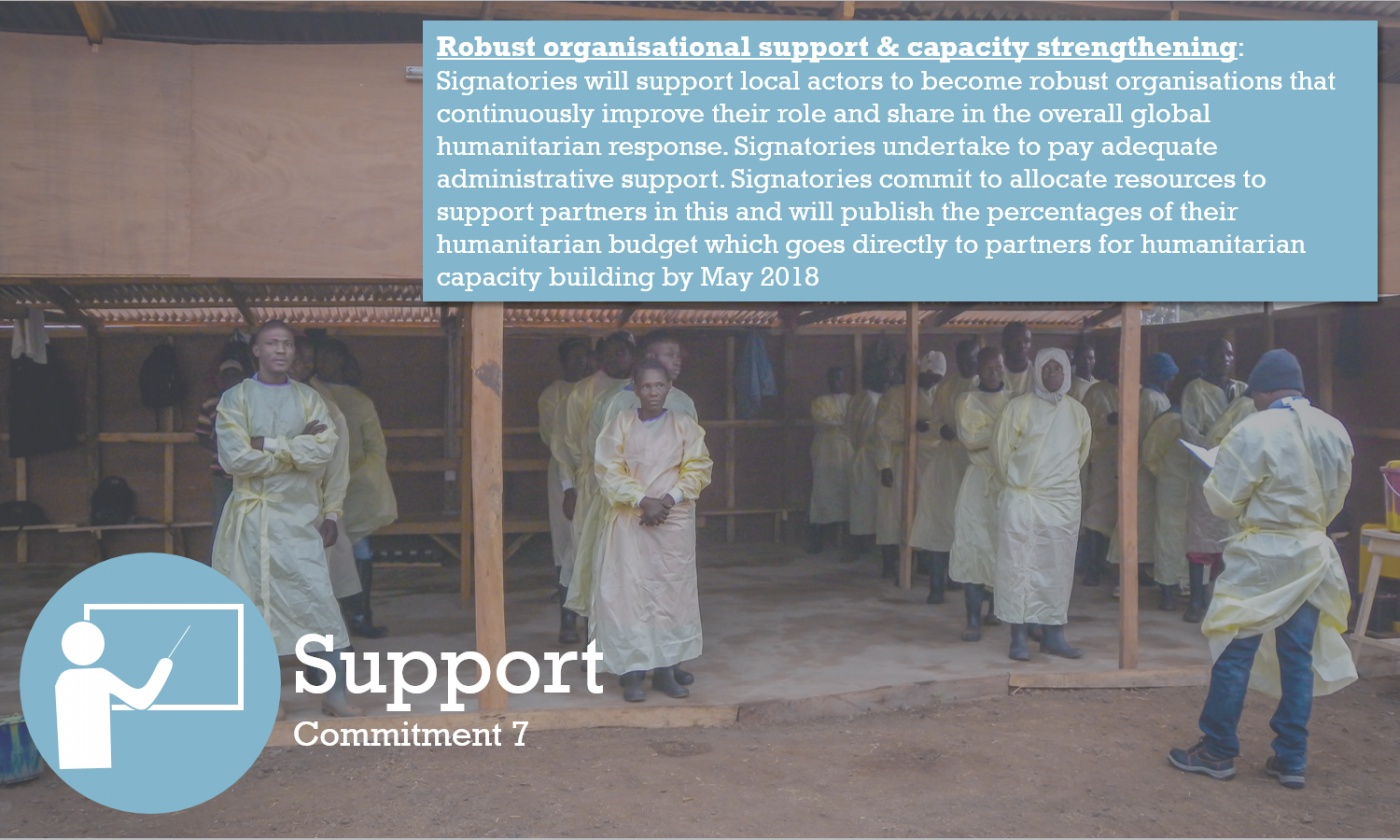Ian McClelland is the Outreach and Engagement Adviser at the Humanitarian Innovation Fund, Elrha
At Elrha’s Humanitarian Innovation Fund (HIF), we’ve recently been doing a lot of thinking around innovation and the localisation agenda. What’s more, we’re trying to put these thoughts into action.
Earlier this year the HIF signed a strategic partnership agreement with the Asia Disaster Reduction and Response Network (ADRRN) with a mutual ambition to support local organisations in the region who are looking for new solutions to humanitarian challenges. And in May/June we held a workshop in Jakarta for teams from across the region to come together, develop their ideas, and share their thoughts on innovation and the localisation agenda.
For anyone who might be unfamiliar with the groundswell beneath these two themes, it mostly comes down to one thing: there’s not enough money. The High Level Panel on Humanitarian Financing (HLP) estimates an annual shortfall of US$15 billion, equivalent to the annual GDP of Botswana (or alternatively, 6 per cent of Apple’s cash reserves) – and roughly 40 per cent of what’s needed. Because there isn’t enough money, and there’s no guarantee that significant amounts of new money will be injected into the humanitarian system, both innovation and localisation have been touted as potential solutions.
At its core, humanitarian innovation is about finding new ways to improve the efficiency and effectiveness of aid – to do more with less. And at the World Humanitarian Summit (WHS) last year, “Transformation through Innovation” was made one of four key themes. Likewise, localisation is one of a series of changes proposed in the WHS “Grand Bargain” that it is hoped will deliver an extra billion dollars in savings over five years.
The logic of localisation – providing more funding to national and local organisations “as directly as possible” – is to increase the efficiency and effectiveness of aid by bypassing the middle-men. As the HLP states in their 2016 report: “The chain of humanitarian financial transactions must be shortened…We need fewer links in the humanitarian funding chain, with a clearer view of what value each layer is adding along the way.”
It’s also about recognising and addressing systemic imbalances in the way that the humanitarian sector functions. In its response to the Grand Bargain ICVA said it was time for the humanitarian system to “move away from centralized, command and control, one system fits all approach to an ecosystem of diverse actors, where frontline responders receive adequate and timely resources.” DFAT have similarly spoken of the need to focus on “recognizing, respecting and strengthening leadership and decision making by local and national actors.”
But where do these two issues – innovation and localisation – overlap? In short, localisation is a necessary component of innovation, and innovation is a necessary component of localisation.
First, as HIF colleague Cecilie Hestbaek said in a recent article on what faecal sludge management can teach us about humanitarian innovation, “context is everything in humanitarian innovation.” Localisation matters because the success of any new innovation is dependent on a range of local factors, including user acceptance, availability of local resources, and supply chains (and therefore costs). There is growing international recognition that local actors are best placed to provide for the needs of their community – they’re almost always the first to respond to disasters and remain on the ground after international teams have left.
Second, if local organisations are going to take on a bigger role within the humanitarian system, they must be given the operational space and funding to develop their own innovative solutions. Yet discussions at the Jakarta workshop highlighted that many local organisations are wholly reliant on restricted project funds and sub-contracted work from international agencies, and lack the staff numbers and time needed to look beyond day-to-day operations. Never mind other structural barriers such as language gaps and complex donor reporting requirements.
Our strategic partnership with ADRRN and the Jakarta workshop are small steps towards addressing these overlaps. The partnership has helped to establish the ADRRN Tokyo Innovation Hub, and together we’re working to bring together local actors, strengthen partnerships, and give them the time and space to develop innovative new ideas. From these first steps, here are three key insights from those people we’ve spoken to:
- Get the words right – writing in plain language is just good practice, but it’s especially important when working across cultures. What can seem like attention-grabbing terms that generate enthusiasm from tech-savvy Millennials – “hackathons”, “labs” etc – can seem exclusionary to those on the outside, less concerned with Silicon Valley than the mountain of work in front of them. Innovation requires all kinds of people, and we need to speak to all of them.
- Work with “spotters” – good ideas can come from anywhere in the world, from any sector and from any community, and if you’re hoping for the people with the best ideas to find you, you’re more than likely to miss them. That’s why we must embrace networks and new partnerships in order to find the locally-created and locally-owned solutions that could make a difference, and ensure that their potential is maximised.
- Embrace the role of convenor – local innovation is best strengthened by bringing people together to share their ideas and learn from each other, and by working with them to address structural barriers. Among the most valued aspects of the Jakarta workshop were the connections made between different organisations across sectors, and the peer-to-peer support that this enabled. These “invisible dimensions of capacity” might be less measurable, but they’re no less important.
To find out more, please contact Ian directly: I.McClelland@elrha.org.

